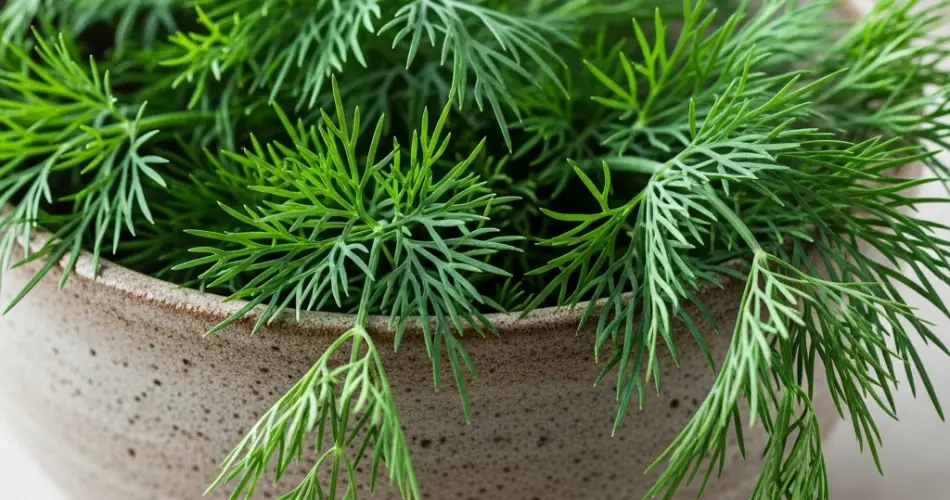Dill (Anethum graveolens) is a fragrant herb prized in kitchens and gardens alike. Known for its feathery green foliage and clusters of yellow flowers, dill offers a unique flavor that pairs beautifully with fish, potatoes, pickles, and many other dishes. While dill is relatively low-maintenance, it still benefits from some basic care to ensure a healthy, productive plant.
Whether you’re growing dill in a container, garden bed, or herb patch, understanding its water, pruning, and general care needs will help you enjoy a steady harvest throughout the growing season.
Choosing the Right Location
Before diving into maintenance, it’s important to plant dill in a spot where it will naturally thrive. Dill loves full sun and well-drained soil. Choose a location that receives at least 6 hours of sunlight per day and has loamy, slightly acidic to neutral soil (pH 5.5–7.0).
Dill can grow quite tall—up to 3 feet or more—so make sure it has enough space and isn’t crowded by shorter herbs or vegetables.
Watering Dill the Right Way
Dill prefers consistent moisture but does not like soggy soil. Getting the watering schedule right is essential for strong stems and lush foliage.
Tips for watering dill:
-
Water regularly but moderately. Aim for about 1 inch of water per week, either from rainfall or manual watering.
-
Check soil moisture by pressing your finger into the top inch of soil. If it feels dry, it’s time to water.
-
Avoid overwatering. Soggy conditions can lead to root rot and fungal problems.
-
Water at the base of the plant rather than overhead to prevent disease and minimize moisture loss through evaporation.
During hot or windy weather, you may need to water more frequently, especially for container-grown dill.
Pruning Dill for a Bushier Plant
Pruning is key to encouraging healthy growth and preventing dill from bolting (going to seed too early).
How and when to prune dill:
-
Begin pruning when plants are 6–8 inches tall. Use scissors or pinch off the top leaves just above a leaf node (where leaves join the stem).
-
Harvest the outer stems first and allow the inner ones to continue growing.
-
Avoid cutting more than one-third of the plant at a time to avoid stressing it.
-
Prune early in the day, when the essential oils are most concentrated, for the best flavor.
Regular pruning also delays flowering, allowing you to harvest flavorful leaves for a longer period.
Dealing with Flowering (Bolting)
Dill naturally flowers and sets seed after a certain point in its life cycle. While flowering is part of the process, early bolting can reduce leaf production.
To manage bolting:
-
Pinch off flower buds as soon as they appear if you want to keep harvesting leaves.
-
Once the plant begins flowering, focus on seed production by allowing flowers to mature.
-
After flowering, dill leaves tend to lose their flavor, so plan to harvest most foliage beforehand.
If you’re growing dill for both leaves and seeds, stagger plantings so you always have some plants in the vegetative stage and others going to seed.
Supporting Tall Plants
Dill stems can become leggy or weak, especially in windy or rainy conditions. Taller plants may need support.
Support tips:
-
Use a garden stake or bamboo stick to keep plants upright.
-
Tie loosely with twine or soft plant ties to avoid damaging the stems.
-
For container plants, place the pot in a sheltered area to protect from strong winds.
Keeping dill upright improves air circulation and prevents foliage from sitting on the soil, reducing the risk of disease.
Pest and Disease Prevention
While dill is fairly pest-resistant, it can occasionally attract aphids, caterpillars (like the swallowtail butterfly larva), or fungal issues if overwatered.
Preventive care:
-
Inspect plants regularly and remove pests by hand or with a strong spray of water.
-
Use neem oil or insecticidal soap if infestations grow.
-
Avoid overcrowding to allow airflow, which helps prevent mildew and rot.
Attracting beneficial insects like ladybugs and lacewings to your garden can also help keep pests in check naturally.
Final Tips for Healthy Dill
-
Succession sow every few weeks to ensure a continuous harvest, especially since dill matures quickly and can go to seed early.
-
Harvest leaves before flowering for the best flavor.
-
Use mulch to retain soil moisture and suppress weeds, especially during dry periods.
-
Let some plants go to seed if you want to collect dill seed for spice or future planting.
Conclusion
Dill is a rewarding herb that, with just a little care, can provide you with weeks of flavorful leaves and seeds. By mastering the basics of watering, pruning, and maintenance, you’ll enjoy a lush and productive dill crop that enhances your cooking and supports your garden’s ecosystem. Whether you’re growing dill for pickles, salads, or pollinators, proper care makes all the difference.



